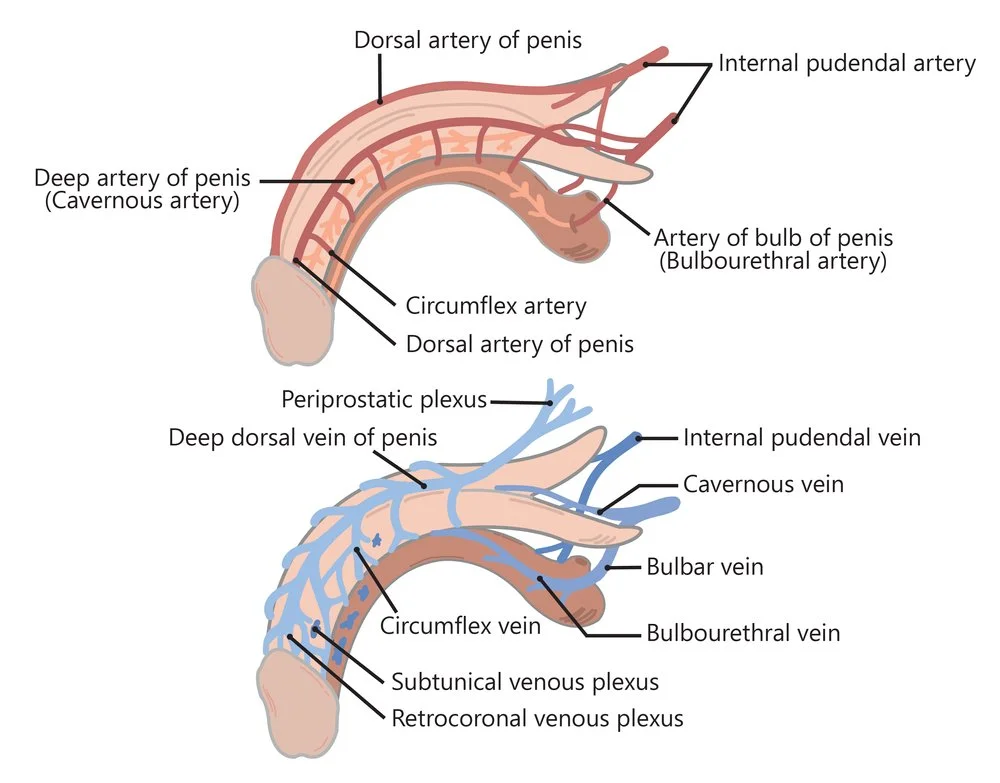VENOUS LEAK - A CONTRIBUTOR TO ERECTILE DYSFUNCTION: AN OVERVIEW AND TREATMENT OPTIONS
It’s common knowledge that many men suffer from erectile dysfunction - up to one in five men have symptoms of ED. What is less commonly known is one of the possible contributors to erectile dysfunction - the venous leak. It is helpful for men to understand this ailment - not only to help find the appropriate treatment but because a venous leak may be an early, clinical symptom of heart disease.
UNDERSTANDING A VENOUS LEAK
When a man becomes sexually aroused, the arteries in the penis expand to allow blood to flow in, making the erection firm. In order to maintain this rigidity, blood needs to stay in the penis until the man ejaculates. To accomplish this, when veins expand with blood flow, a trap door-like mechanism is triggered, helping maintain blood inside the vessels (a process called veno-occlusion). Once climax is achieved or sexual stimulation ends, the veins widen and blood flows back into the body. If the veins do not adequately constrict, blood will “leak” back into the body, softening the erection.
Some men who experience venous leaks may be able to get an erection but lose it quickly. And this loss of blood from the penis may be indicative of broader vascular issues. According to Johns Hopkins Medicine, “The problem manifests first in the penis, because it’s easy for a man or his partner to notice ED, but the oxidative stress and inflammation that are causing poor relaxation of the penis vascular tissue is also likely happening in other parts of the body.”
This problem is common in men with diabetes, high cholesterol, high blood pressure or peripheral vascular disease. Obesity and excessive stress may also cause venous leaks.
A venous leak can be definitively diagnosed using Doppler imaging. Specifically, duplex Doppler ultrasonography, or occasionally angiography of the penile deep arteries, are performed to identify areas of arterial obstruction or venous leak.
TREATING ERECTILE DYSFUNCTION WITH AN ESTABLISHED VENOUS LEAK
The majority of men over 40 with erectile dysfunction or decline have a component of a venous leak. This is because, as mentioned above, when cardiovascular health declines with age and chronic issues, the ability of blood vessels to fill, dilate and trap blood declines. For this reason, we recommend a comprehensive approach mentioned in previous articles to treat erectile dysfunction with a component of venous leak.
LIFESTYLE INTERVENTIONS
Treating diabetes, high blood pressure and heart disease through diet and exercise, while not glamorous, can profoundly improve erectile dysfunction and prevent further decline.
ORAL MEDICATION
Oral PDE5 inhibitors like Viagra and Cialis may be helpful to address a venous leak. However, some studies have shown that people with severe venous leakage may not benefit from this treatment.
LOW-INTENSITY SHOCKWAVE THERAPY
Shockwave therapy improves blood flow in the penis due to a process called neovascularization, which is the formation of new blood vessels. As a result, the restriction in the blood vessels and arteries are also reduced. Shockwave therapy also stimulates growth factors - enhancing tissue growth and repair. You can read more about shockwave therapy and how this treatment helps treat erectile dysfunction issues like venous leaks on this page.
SURGERY
If medication and noninvasive procedures do not work, surgery may be necessary. Penile Vascular Reconstructive Surgery helps improve the trapping of blood, enabling men to maintain an erection. Another surgical option is a Penile Implant, a procedure in which a penile device is implanted inside the penis to control rigidity during intercourse.

